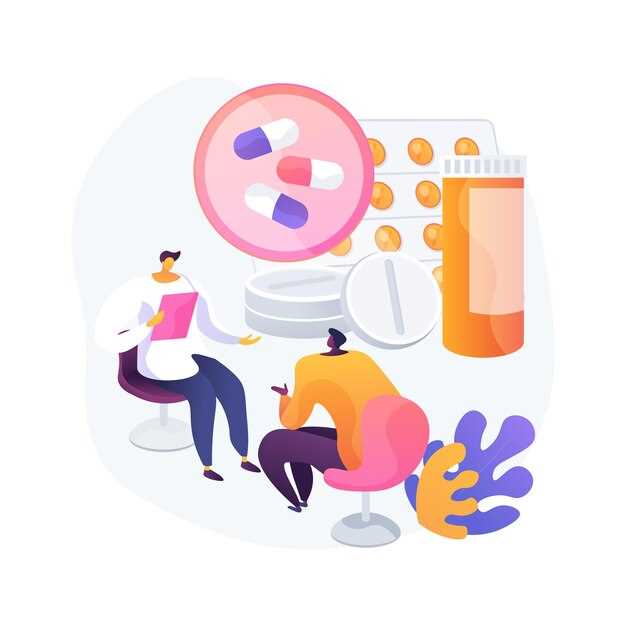
Are you currently taking both Seroquel and Methadone? It’s crucial to be aware of the potential drug interaction that may occur between these medications.
What is Seroquel?
Seroquel, also known by its generic name Quetiapine, is an antipsychotic medication prescribed to treat conditions such as schizophrenia, bipolar disorder, and major depressive disorder.
What is Methadone?
Methadone, a synthetic opioid, is primarily used to manage severe pain and treat opioid addiction. It is often prescribed as part of a comprehensive treatment plan to help individuals recover from opioid dependency.
The Importance of Understanding Drug Interactions
When certain medications are taken together, their chemical composition can interact with one another, potentially affecting their effectiveness or leading to harmful side effects. It is essential to be aware of potential drug interactions to ensure your safety and well-being.
Potential Drug Interaction Between Seroquel and Methadone
When Seroquel and Methadone are taken together, it may increase the risk of central nervous system (CNS) depression. This can lead to symptoms such as excessive drowsiness, difficulty breathing, and even coma or death.
If you are currently taking both Seroquel and Methadone, it is vital to discuss this potential drug interaction with your healthcare provider. They can evaluate your specific situation and adjust your medication regimen if necessary.
Remember, proper medication management and open communication with your healthcare provider are key to maintaining your health and well-being.
Don’t hesitate to reach out to your healthcare professional to learn more about the potential drug interaction between Seroquel and Methadone and how it may impact your treatment plan.
Overview of Drug Interaction
When taking both Seroquel and methadone together, it is important to be aware of the potential drug interaction between these medications. Drug interactions occur when the effects of one drug are altered by the presence of another drug. In this case, Seroquel and methadone can interact and affect the body differently than they would if taken alone.
Mechanism of Action
Seroquel is an atypical antipsychotic medication that affects the levels of certain chemicals in the brain, including dopamine and serotonin. It is primarily used to treat symptoms of schizophrenia and bipolar disorder. Methadone, on the other hand, is a synthetic opioid that is commonly used for the treatment of pain and opioid addiction. It works by binding to opioid receptors in the brain, reducing withdrawal symptoms and relieving pain.
When these two medications are taken together, their effects can be compounded. Seroquel can enhance the sedative effects of methadone, leading to increased drowsiness and dizziness. Additionally, both medications can cause respiratory depression, which can further be enhanced when taken in combination.
Risks and Complications of Combined Use
Taking Seroquel and methadone together can pose several risks and complications. The increased sedation and respiratory depression can lead to impaired cognitive function, decreased alertness, and impaired coordination. This can be especially dangerous for individuals who operate heavy machinery or engage in activities that require mental acuity.
Furthermore, combining Seroquel and methadone can increase the risk of developing a condition called serotonin syndrome. Serotonin syndrome is a potentially life-threatening condition that occurs when there is an excess of serotonin in the body. Symptoms of serotonin syndrome include agitation, hallucinations, rapid heart rate, high blood pressure, and fever.
In addition, the combination of these medications can lead to an increased risk of falls and injuries, especially in elderly individuals. The sedative effects of Seroquel and methadone can cause dizziness and unsteadiness, increasing the likelihood of accidents.
It is important to note that these risks and complications can vary depending on the dosage and individual factors, such as age and overall health. It is crucial to consult with a healthcare professional before taking Seroquel and methadone together to ensure the safety and effectiveness of the treatment.
Managing the Drug Interaction
If you are prescribed both Seroquel and methadone, it is important to work closely with your healthcare provider to manage the drug interaction. They will be able to monitor your response to the medications and adjust the dosages as needed. It may be necessary to regularly monitor vital signs, including respiratory rate and blood pressure, to ensure the medications are working effectively and not causing any harmful effects.
It is also important to avoid alcohol and other substances that can enhance the sedative effects of Seroquel and methadone. These substances can further depress the central nervous system, increasing the risk of adverse effects.
In some cases, alternative medications or treatment options may be considered to minimize the drug interaction. Your healthcare provider will be able to discuss these options with you and determine the best course of action.
Remember, always follow your healthcare provider’s instructions and guidelines when taking medications. They are the experts and will be able to provide you with the most accurate and individualized recommendations for your specific situation.
Seroquel and Methadone: Mechanism of Action

When taken separately, Seroquel and Methadone work in different ways to treat different conditions. However, when these two drugs are used together, their combined effect can potentially lead to serious risks and complications.
Seroquel, also known as Quetiapine, is an atypical antipsychotic medication primarily used to treat schizophrenia and bipolar disorder. It works by altering the levels of certain chemicals in the brain to help regulate mood, behavior, and cognition.
Methadone, on the other hand, is an opioid medication used for the treatment of moderate to severe pain and as a maintenance therapy for opioid dependence. It works by binding to opioid receptors in the brain and central nervous system, relieving pain and reducing withdrawal symptoms.
When Seroquel and Methadone are used together, there is a potential for drug interactions. Seroquel can enhance the sedative effects of Methadone, leading to increased drowsiness, dizziness, and impairment of cognitive and motor skills. This can be especially dangerous for individuals who need to drive or operate heavy machinery.
Furthermore, the combination of Seroquel and Methadone can increase the risk of developing a condition called QT prolongation. QT prolongation is a disorder of the heart’s electrical activity that can potentially lead to irregular heart rhythms, fainting, or even sudden cardiac arrest.
| Risks of Combined Use | Complications of Combined Use |
|---|---|
| Increased sedation | QT prolongation |
| Drowsiness | Irregular heart rhythms |
| Dizziness | Fainting |
| Impaired cognitive skills | Sudden cardiac arrest |
| Impaired motor skills |
It is important to note that these risks and complications can vary depending on individual factors such as the dosage, duration of use, and the presence of other medical conditions. Therefore, it is essential to consult with a healthcare professional before combining Seroquel and Methadone or making any changes to your medication regimen.
Next, we will discuss how to effectively manage the drug interaction between Seroquel and Methadone to ensure the safest and most effective treatment plan.
Risks and Complications of Combined Use
Combining Seroquel and Methadone can have serious risks and complications. It is important to understand these potential dangers before starting any treatment regimen that involves both medications.
Increased sedation

One of the main risks of combining Seroquel and Methadone is increased sedation. Both medications can cause drowsiness and dizziness on their own, and when taken together, these effects can be intensified. This can impair your ability to drive or operate machinery, and it can also increase the risk of falls or accidents.
Respiratory depression
Another risk of combining Seroquel and Methadone is respiratory depression. Both medications can suppress the respiratory system, and when taken together, they can further slow down breathing. This can be particularly dangerous in individuals with respiratory conditions or those who are already experiencing breathing difficulties.
It is important to monitor respiratory function closely when using Seroquel and Methadone together, and any signs of breathing problems should be reported to a healthcare professional immediately.
Other potential complications of combined use include:
- Increased risk of orthostatic hypotension (low blood pressure when standing up)
- Increased risk of irregular heartbeat or arrhythmias
- Increased risk of falls or accidents
- Worsening of mental health conditions, such as depression or anxiety
- Potential for drug dependence or addiction
It is essential to discuss your medical history and any current medications with your healthcare provider before starting a treatment regimen that involves both Seroquel and Methadone. They can provide guidance on the potential risks and complications and help determine the best course of action for your individual needs.
In conclusion, while Seroquel and Methadone can be effective medications, their combined use carries risks and complications that need to be carefully considered. It is crucial to work closely with a healthcare professional to manage these risks and ensure the safest and most effective treatment.
Managing the Drug Interaction
When it comes to managing the drug interaction between Seroquel and Methadone, there are a few important steps that need to be taken. First and foremost, it is crucial to consult with a healthcare professional who can provide guidance and monitor your progress.
Avoid self-medication or making any changes to your medication regimen without the advice of a healthcare professional. They will be able to assess your individual situation and provide the best course of action.
It may be necessary to adjust the dosage of either Seroquel or Methadone to minimize the potential risks and complications associated with their combined use. Your healthcare provider will determine the optimal dosage based on factors such as your medical history, current condition, and other medications you may be taking.
In some cases, it may be necessary to switch to an alternative medication that does not have a significant drug interaction with Methadone. Again, this decision should be made in consultation with a healthcare professional.
Frequent monitoring is essential when taking Seroquel and Methadone together. Your healthcare provider will likely schedule regular check-ups to assess your response to the medication combination and make any necessary adjustments.
It is important to be aware of the signs and symptoms of potential side effects or complications. If you experience any unusual or concerning symptoms, it is important to seek medical attention immediately.
| Key Points |
|---|
| Consult a healthcare professional for guidance and monitoring |
| Avoid self-medication or changes to medication regimen |
| Consider dosage adjustments |
| Switch to alternative medication if necessary |
| Regular monitoring and check-ups |
| Be aware of potential side effects or complications |
By following these steps and working closely with your healthcare provider, you can effectively manage the drug interaction between Seroquel and Methadone, minimizing the risks and ensuring your overall well-being.
